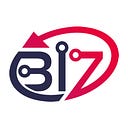What Technologies Are Needed To Build An E-Commerce Website?

Over the last numerous years, eCommerce has changed how people buy and sell online. The Internet offers a fast and easy way for people to buy things without visiting a real store. An online store can reach customers anywhere on the planet.
Online businesses are rapidly developing an eCommerce website to face times of economic adversity by offering greater discounts, flat-rate delivery, loyalty programs, and other incentives. There are numerous famous eCommerce platforms that make it easy to run promotions and keep your customers blissful.
At long last, albeit the blast in online sales has additionally opened a potential avenue for fraud and scams, site-builders have managed to remain ahead by offering first-in-class site protection and payment security to keep the online marketplace as safe as could be expected.
Building a successful eCommerce site has become one of the most famous business trends. It might seem like a herculean errand to set up an online business (not underestimating it either) or the genuine e-commerce website development, however, in reality, it isn’t as large of a hurdle as you’ve presumably been hearing from the vast majority of the folks out there.
Doing online business means trades of goods from your Webstore to the customer, and trade means transactions. The idea of creating an online store raises a few questions for everyone like ‘how’ and ‘who’ can build my e-commerce store?
On what platforms might my eCommerce at any point store be fabricated?
How might I track down products to sell on my online store and how the transactions will be handled?
Like all business requires proper planning, discussion, backup plans, and contingency plans, also before building any e-commerce store, you need proper planning about everything. Before beginning, you need to think and rundown down every one of the possible aspects and repercussions regarding online business.
Write your e-business plans. The e-commerce plans start with website goals. Who will be your targeted audience? What sort of products and services would you like to offer. How long and money do you need to make your online presence. How might you handle shipping and payments?
In spite of the fact that there are numerous eCommerce and website hosting platforms, you should choose a perfect stage where your eCommerce store can be constructed.
Everything seems troublesome from the beginning, but with every step, you will get a handle on things easily.
A great deal of the things which didn’t make sense at first would likely begin resonating with time. Here’s a rundown of everything which requires opening an e-commerce store. Let’s get serious:
E-commerce Website Development
There are numerous eCommerce tools and technologies required to build an e-commerce store and operate a successful online business. Both software and hardware technologies should be included in your e-business plan.
1. Web Server
A web server is used to host an e-commerce website. All the Html, JavaScript, PHP files, databases, and media files that make up the entire website are stored on this server.
The webserver runs on Windows or Linux operating systems. Dealing with a web server is a very specific job. The website development companies host the site on their own web server or pay a hosting organization to provide space on a secure web server.
When a user visits any website on a web browser, the webserver realizes the client is requesting some specific information. So it processes that request and serves the correct files to the client. The web browser then shows these files to the user.
There are many types of server software available including application software, database server, file server software, and cloud computing software.
The well-known web server software includes Apache and Windows IIS. Server software can either be used on a physical server or on a virtual/cloud server.
2. Web Tools
A web authoring tool is used to create the front end of an e-commerce website. They range from essential HTML text editors (like Notepad++) to more complex graphic authoring tools and CMS (content management system) with worked in frameworks and debugging tools.
Html files are created by Dreamweaver alongside the CSS (flowing style sheet) which enhances the visual appearance of the site.
Another web authoring tool would be Visual Studio .net which can be used to make the sites that have integrated databases in it. Graphic design packages are additionally web authoring tools that design the skin for a user interface.
3. Database System
A database is an integral piece of an e-commerce website. The database is used to store information about the products and services of the website like valuing, description, images, details, and sales.
Likewise, the customer details are additionally stored in the database like what they ordered, their payment details, shipping details, and contact information.
It is necessary to program the website to connect securely to the database so every one of the orders is processed correctly and your business moves along as expected.
Technologies like PHP and MySQL are the correspondence route between the website and the DBMS (database management system).
4. Networking
TCP (transfer control convention) and IP (internet convention) defines how computers ought to connect with each other through the internet and how they share information. Normal TCP/IP conventions are HTTPS, HTTP, and FTP.
We use these conventions to access the website without even realizing it. FTP (file transfer convention) is used to download files from a browser.
HTTPS (where the “S” represents security) is responsible for the secure correspondence between a server and a browser like record information or personal information.
For an e-commerce website or online store, giving a secure connection is considered essential. SSL (secure sockets layer) and TLS (transport layer security) are the conventions associated with the trust and security of any e-commerce website.
